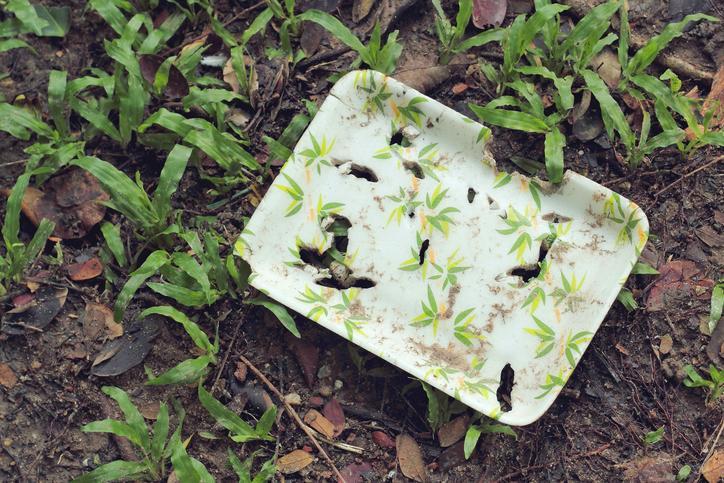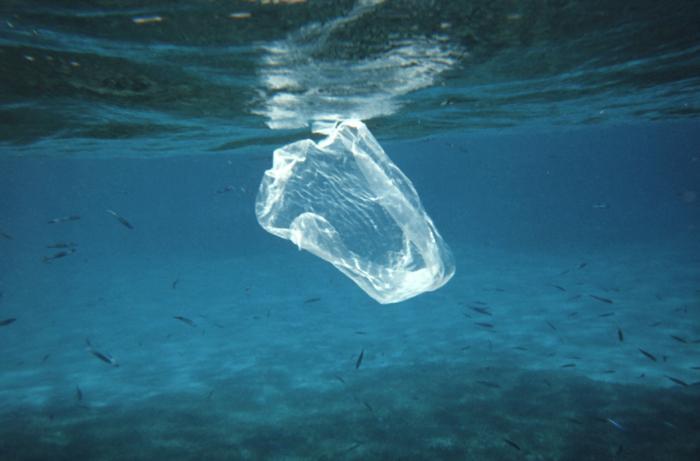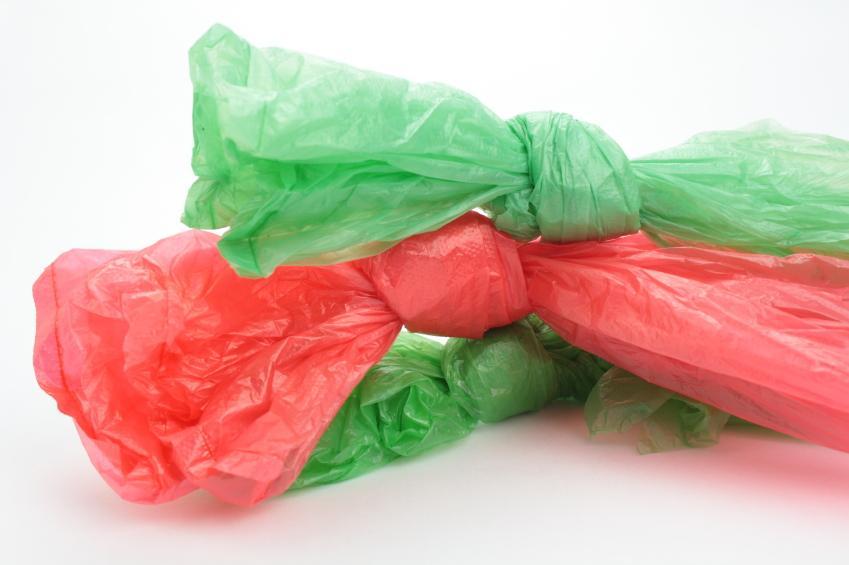How Long Does Biodegradable Plastic Take to Degrade?


Biodegradable plastics are a type of plastic which is made from a product able to be degraded by living organisms. These organisms are usually in the form of bacteria or other microbes. They are often confused with bioplastics, but this latter term refers to plastics made from renewable biomass sources. While biodegradable plastics can be made from bioplastics, this is not exclusively the case. The result of biodegradation is the original substance being turned into water, biomass or carbon dioxide.
While biodegradable plastics are proposed as a good solution to waste management and minimizing pollutant effects, it may not be the solution many environmentalists are looking for. thedailyECO explains more in our article asking how long does biodegradable plastic take to degrade?
How does normal plastic degrade?
Plastic is a widely used material throughout the world, but it is also one of the slowest to decompose. There are various types of plastics depending on their production method. Although it will take hundreds of thousands of years to degrade into smaller pieces of microplastic, plastic will never degrade fully. Plastic is made from polymers which often derived from petroleum which is molded at high pressures and temperatures.
Since plastic is made from petroleum molded at high temperatures, it degrades at equally high temperatures. While the temperature this takes depends on the type of plastic, it often requires temperatures of over 300ºC (572ºF) for this process to even begin. This plastic degradation process is not clean. It generates many pollutants, not only from its incineration, but also in its transportation.
The degradation of plastic is a process that alters its structure and characteristics, making it more prone to breaking down into smaller pieces. The complete degradation of plastic can take between 100 and 1,000 years, depending on its size and composition. During this time, harmful pollutants may be released into the environment. Many plastics are discarded indiscriminately, harming wildlife and ecosystems. Doing so puts the health of the planet at risk.
Discover the consequences of plastics in the ocean with our related guide.

What is biodegradable plastic?
Biodegradable plastics are plastics which are are able to be degraded by biological agents, usually in the form of microbes. They are often manufactured using organic materials obtained from renewable sources such as biomass. Biomass can be almost anything derived directly from living organisms, such as sugarcane, cellulose, polysaccharides or cornstarch.
As you may know, these materials constitute organic waste which can be degraded by microorganisms such as bacteria and fungi. The benefit obtained from this biological decomposition is that products such as carbon dioxide, water and other biomaterials are generated. Although carbon dioxide is problematic due to being a greenhouse gas, the degradation of biodegradable plastics is generally less harmful than that of conventional plastics.
Degradation times of bioplastics are much shorter than conventional plastics. It is important to note that many products which are sold as biodegradable plastic are not made from biomass, even if they are able to be degraded biologically. Some biodegradable plastics are also made from petrochemicals or a combination of renewable biomass materials and synthetic chemicals.
There are certain limitations for the use of biodegradable plastics when compared to conventional plastic. These are often due to their durability and performance in certain environments, such as those with high heat levels. Generally speaking, biodegradable plastics can be used as a replacement for disposable conventional plastics since they are designed for short-term use. Some examples include:
- Packaging: since biodegradable plastic packaging can decompose faster than conventional packaging.
- Agriculture: this plastic can be mixed into the soil with layers of mulch and seed (not always suitable).
- Medicine: this plastic can be useful for the manufacture of absorbable sutures, microdevices or capsules that degrade inside the body.
Discover more about how we can better manage our refuse with our article on what does it mean to live zero waste?
How long does it take for biodegradable plastic to degrade?
The first thing we need to know is that any type of plastic takes a long time to degrade. We have already shared that conventional plastics takes thousands of years to degrade. Biodegradable plastics takes much less time in comparison, generally beginning to degrade after around 6-18 months. Biodegradable plastics will often have a ‘use by’ date for this reason. The total degradation time for these biodegradable products ranges from 1.5 to 3 years. While shorter than that of conventional plastics, this is still a significant period.
As we can see, this degradation process is not short. The exact time it takes to degrade will depend on the type of biodegradable plastic used and the conditions in which it is maintained. The type of microorganism used to biodegrade the plastic will also be important, as will temperature and humidity. When biodegradable plastics are buried in landfill, they can emit greenhouse gases and cause other forms of pollution.
For instance, conventional plastic diapers, made from petroleum-based materials, can take 300 to 400 years to degrade. In contrast, biodegradable diapers, while more environmentally friendly, can still take 3 to 6 years to fully decompose. During this time, they too contribute to pollution, although biodegradable materials tend to provide more nourishment to organisms during the decomposition process compared to conventional plastics.
Learn more on how different types of waste are produced with our article on what is industrial waste?

Are biodegradable plastics good for the environment?
The biodegradability of plastic is very dependent on environmental conditions. This includes or own bodies since microplastics are being discovered in human tissue, something which has the potential for serious health effects[1]. Biodegradable plastics can also become microplastics, even if their degradation is overall less impactful than conventional plastics.
While biodegradable plastics can be beneficial for certain implementations when compared to conventional plastics, they still contribute to global waste. Biodegradable plastics are designed to help make disposable products less polluting, but the use of disposable products is problematic in and of itself.
Single-use plastics cannot be recycled, so it is good to phase out their use. However, many of the alternatives have also been shown to have a great impact on environmental health[2]. There is a general misconception that biodegradable plastics are good for the environment, but this doesn't take into consideration the following:
- Production: the production process of biodegradable plastics is still highly polluting, especially considering the chemicals used to produce them.
- Leaching: some of the chemicals used in the production process can leach into the environment as they biodegrade, causing harm to the food chain for plants and animals.
- Recycling complication: separating biodegradable plastics and other conventional plastics is necessary since the former cannot be recycled. This can complicate the recycling process and lead to greater waste.
- Landfills: as we have stated, adding biodegradable plastics to landfills can mean the conditions they required for degradation cannot always be met.
- Greenhouse gases: biodegradation of these types of plastic can result in methane, CO2 and other greenhouse gas emissions.
Taking these into account, we cannot exactly say they are better for the environment that conventional plastics. In this way, all plastics cause potential harm. While biodegradable plastics may be useful or more beneficial in some circumstances, they still contribute to global waste. Better waste management systems are required to solve the world's refuse problems, using a holistic approach which takes into consideration many different factors.
Discover more about alternative waste solutions with our article on what is a biodigestor and how does it work?

If you want to read similar articles to How Long Does Biodegradable Plastic Take to Degrade?, we recommend you visit our Environmental technology category.
1. Gaspar, L., Bartman, S., Coppotelli, G., & Ross, J. M. (2023). Acute Exposure to Microplastics Induced Changes in Behavior and Inflammation in Young and Old Mice. International journal of molecular sciences, 24(15), 12308.
https://doi.org/10.3390/ijms241512308
2. Tan, Y., Wen, Z., Hu, Y., Zeng, X., Kosajan, V., Yin, G., & Zhang, T. (2023). Single-use plastic bag alternatives result in higher environmental impacts: Multi-regional analysis in country with uneven waste management. Waste management (New York, N.Y.), 171, 281–291. Advance online publication. https://doi.org/10.1016/j.wasman.2023.08.040







